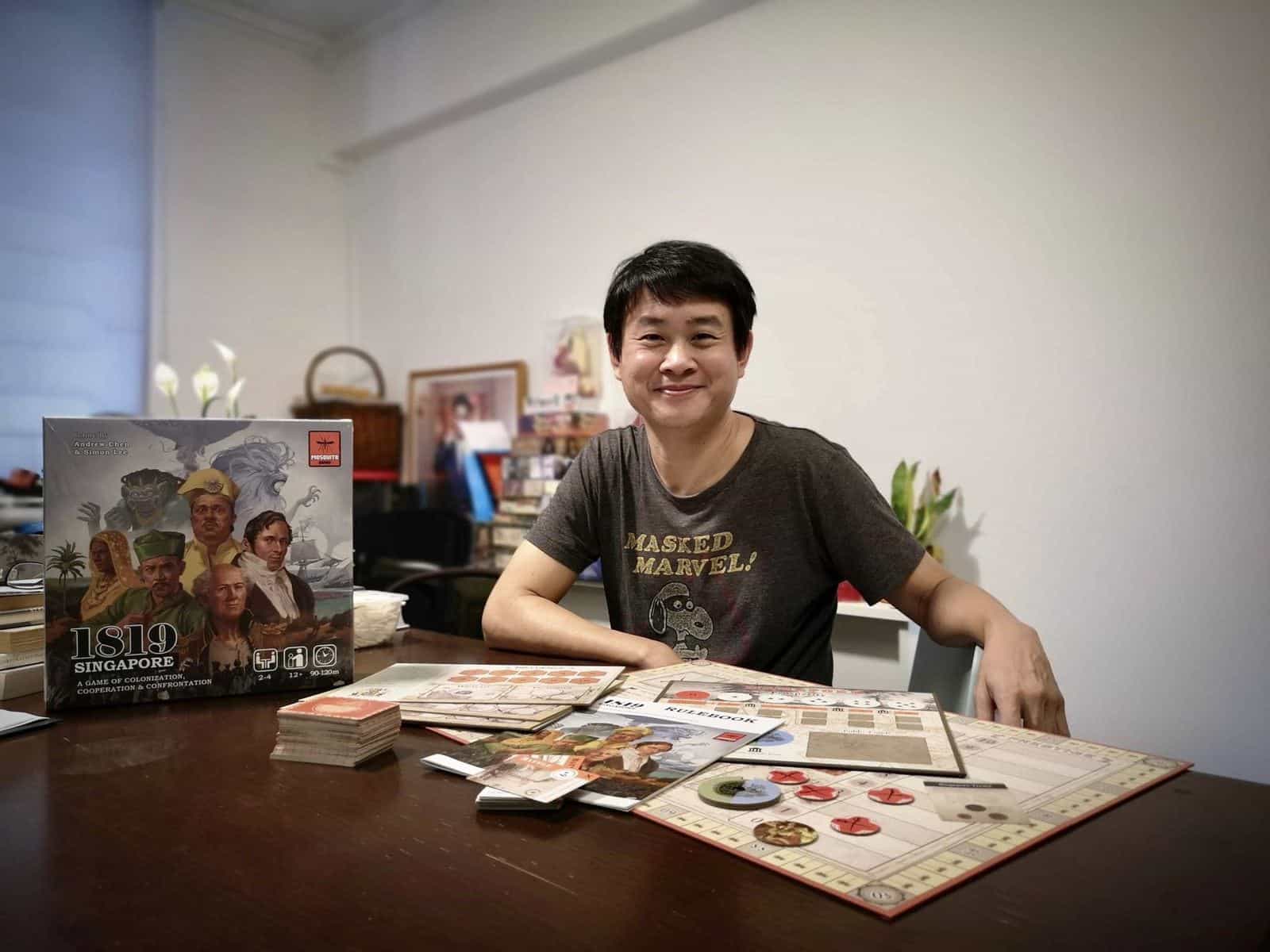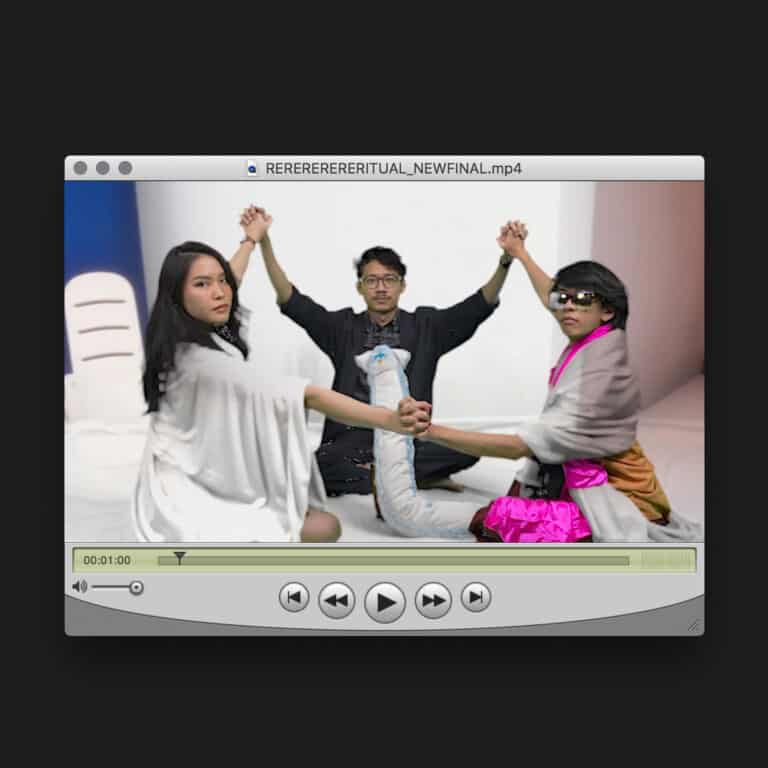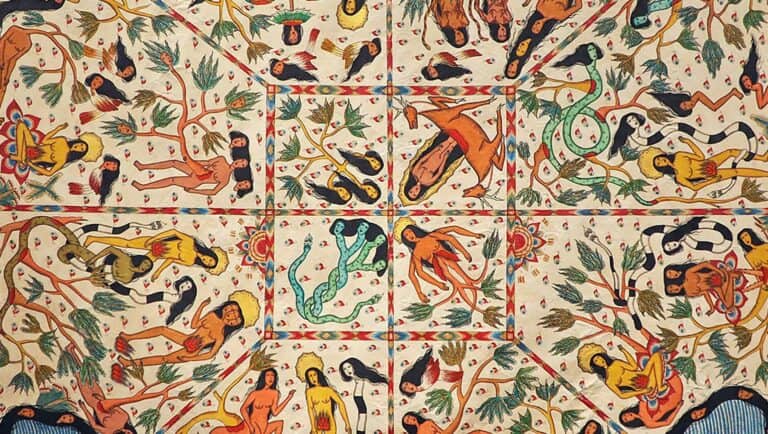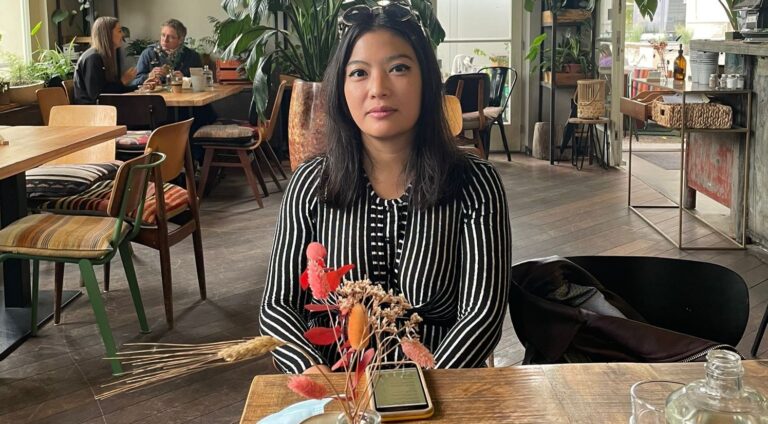Celebrated cartoon artist and illustrator Sonny Liew needs no introduction. His magnum opus, graphic novel The Art of Charlie Chan Hock Chye, was a New York Times bestseller and received three Eisner Awards as well as the Singapore Literature Prize – the first graphic novel be granted this honour. We spoke to him recently about one of his recent works, the board game installation Singapore 1819, conceived and created for the exhibition Expressing Heritage: Art and Originality Unfold at Temenggong Artists-in-Residence.

We are all, of course, familiar with your body of work in the genre of graphic novels – what sparked your interest in designing and developing a board game?
Well, to be accurate it isn’t a “real” board game since it wasn’t play tested or intended to be actually played – more of an art installation, with the appearance of a board game. So, in that sense, it is similar to the fictional character and comics of Charlie Chan in The Art of Charlie Chan Hock Chye.
That said, the specific choice of board games came about due to my own rekindled interest in the hobby – I’d played Risk, Cluedo and Monopoly like most kids, then some games like Axis and Allies in my teenage years … but hadn’t really played board games for many years until maybe 2019, when discovering reviews on YouTube and realising how far games had changed and advanced.
At one level they were simply fun to play with friends … and there was also the game mechanics aspect that was interesting – something like Pandemic, where players work together to overcome the game puzzle itself – and most games offering some sort of abstracted interpretation of some aspect of a real or made-up world … it was fascinating on several levels.
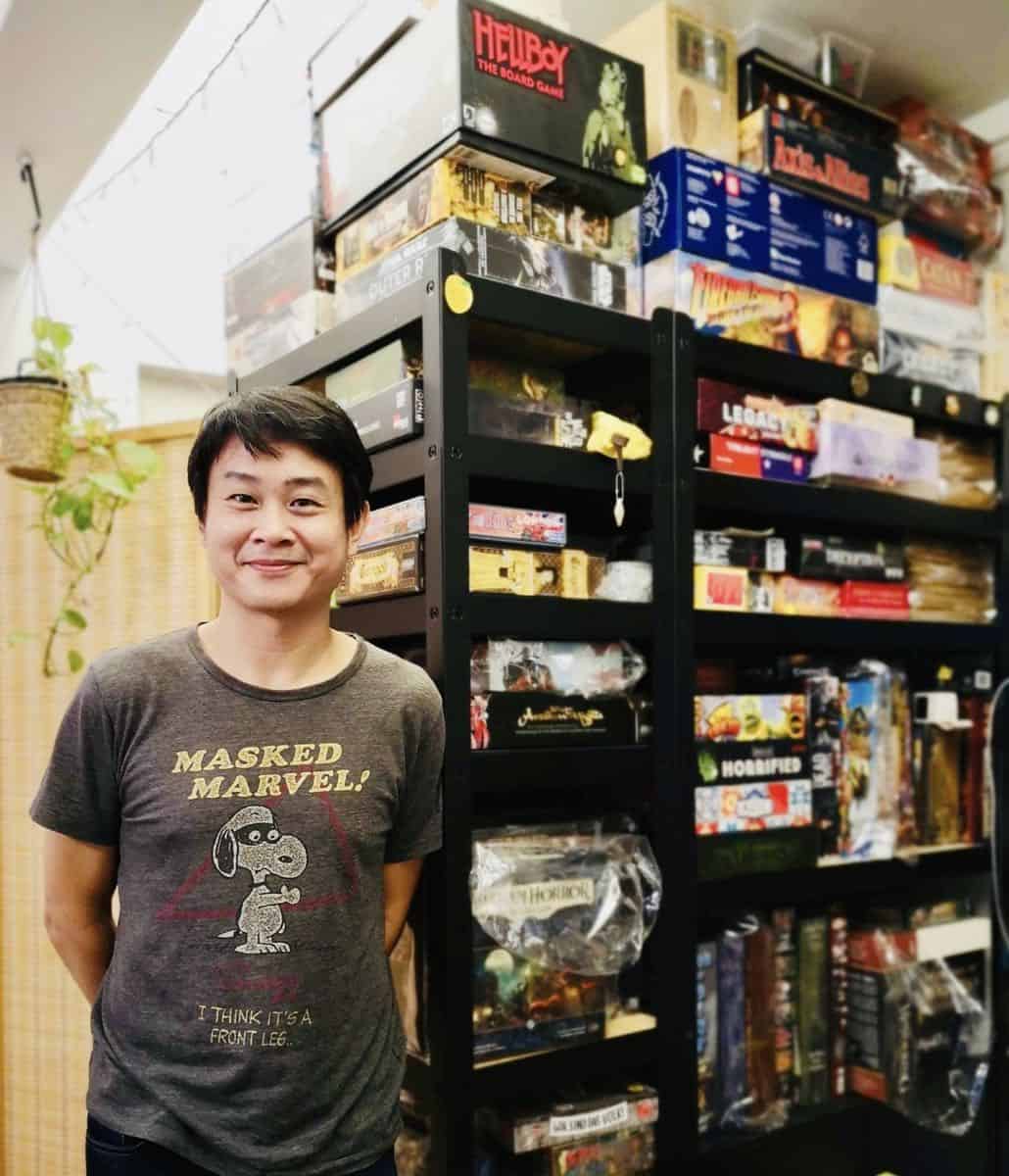
So when an opportunity came from Temenggong Artists-in-Residence to create an artwork, I thought it would be a great opportunity to replicate some of those elements in a made-up board game about the early days of the British colonisation of Singapore.
What are the similarities and differences between the process of creating a graphic novel, on the one hand, and designing and developing a board game, on the other?
Again, I can’t say for sure what the actual process of creating a board game is like since we didn’t go through all the steps like play testing … but my sense is that there are some similarities in any kind of creative process in any medium, in that it often involves created drafts or prototypes and then many iterations to get the right clarity and narrative structures in place. In comics, that would mean working out the thumbnails, in animation and film, the storyboards, in games, the play testing. Even if you skip that phase, the final editing process would also involve this process of refining so there’s probably no escape from it.
Can you tell us a little bit about your personal experience designing and developing Singapore 1819? What were some of the challenges and difficulties? And what was fun, interesting about it?
To be honest, part of the reason for choosing not to make it a “real” game initially was the belief that it would be an easier process. We (once things got rolling, I roped in several collaborators – Andrew Kwan, Scott Chua, Roshan Singh, Chng Xin Xuan and, later on, Faris Joraimi, to work on the project) had thought that we wouldn’t have to worry too much about rules since it wasn’t going to be played …
As it turned out, we ended up creating quite a dense set of rules – for one thing, we needed a narrative of the game that would make sense when explaining what it was supposed to be about, how it tied into actual historical events and interpretations. Beyond that, the absence of rules also meant that there was very little structure to guide the visual and component design.
So a set of made up rules was needed to make everything work, and that also meant quite a lot of research into understanding the history of that period, and then figuring out which aspects we wanted to represent in the game, and at what level – what would be crucial parts of the game’s mechanics, what elements might be more aesthetic adornments and so on…
We also wanted to have a video “review” of the game as part of the installation, and the ideal folks to do that was the team at Shut Up and Sit Down – so convincing Quintin Smith to come on board the project was also something we had to do.
Let’s talk about aims or objectives now. Comparing how a graphic novel can be used to convey certain ideas, or ideologies even, a certain worldview – how it makes meaning – and how a board game like Singapore 1819 makes and communicates meaning. How are they similar and then again how are they different?
I guess there is a certain level of active participation in games when compared to reading – or at least a different kind of participation. In a game you take on the role of one of the protagonists in the unfolding of events, within the constraints of the rules; that arguably means that everyone is very conscious of how the mechanics have been set up. Reading a comic, novel, watching a movie or even playing a video game – you can be swept along by the narrative without needing to know how the medium is working. With a board game, the active need to know the rules, to be brushing up against their constraints in your decision making process; perhaps that means a more immediate understanding of how the game makers have abstracted and interpreted reality?
But then visitors to the exhibition didn’t actually get to play the game, so we had to provide that experience another way, and that’s where the video installation came in. It’s not quite the same thing, but when I’d watched video reviews of games I’d never played, I did feel some level of understanding of they worked, especially with good reviewers like SU&SD.
So what were your aims in creating Singapore 1819? What meaning were you aiming to communicate or convey to players?
One thing was to give agency to what we call the “Malay Chiefs” in the game – the roles of Sultan and Temenggong. That itself was partly a response to the nature of most board games, where players usually take on the role of colonisers. It’s tricky to have players take on the role on the colonised side since there would be power imbalances if you tried to be historically accurate.
So we made up this 2 version system, a “fantasy mode” with “spirit powers” and a “simulation mode” where those powers are removed from the game, to address these issues.
As a whole, I guess these elements were meant to convey the historical constraints that different actors were working under, whether it was the mindset of Malay chiefs who saw themselves as rightful rulers leasing out their ports or the difficulties of raising revenue for a city whose Free Port ambitions meant shipping and trade couldn’t be taxed.

On the visual design side, we hoped to do several things – one was to portray Raffles and Farquhuar more accurately – the former in contrast with the idealized versions in some portraits and statues, and the latter dressed in a sarong, as opposed to the full British military attire seen in his portraits.
And then there was Sultan Hussein and Temenggong Abdul Rahman, where very little visual record exists. Creating illustrations and miniatures of them was a way to redress this absence, within the environment we set up at the exhibition.
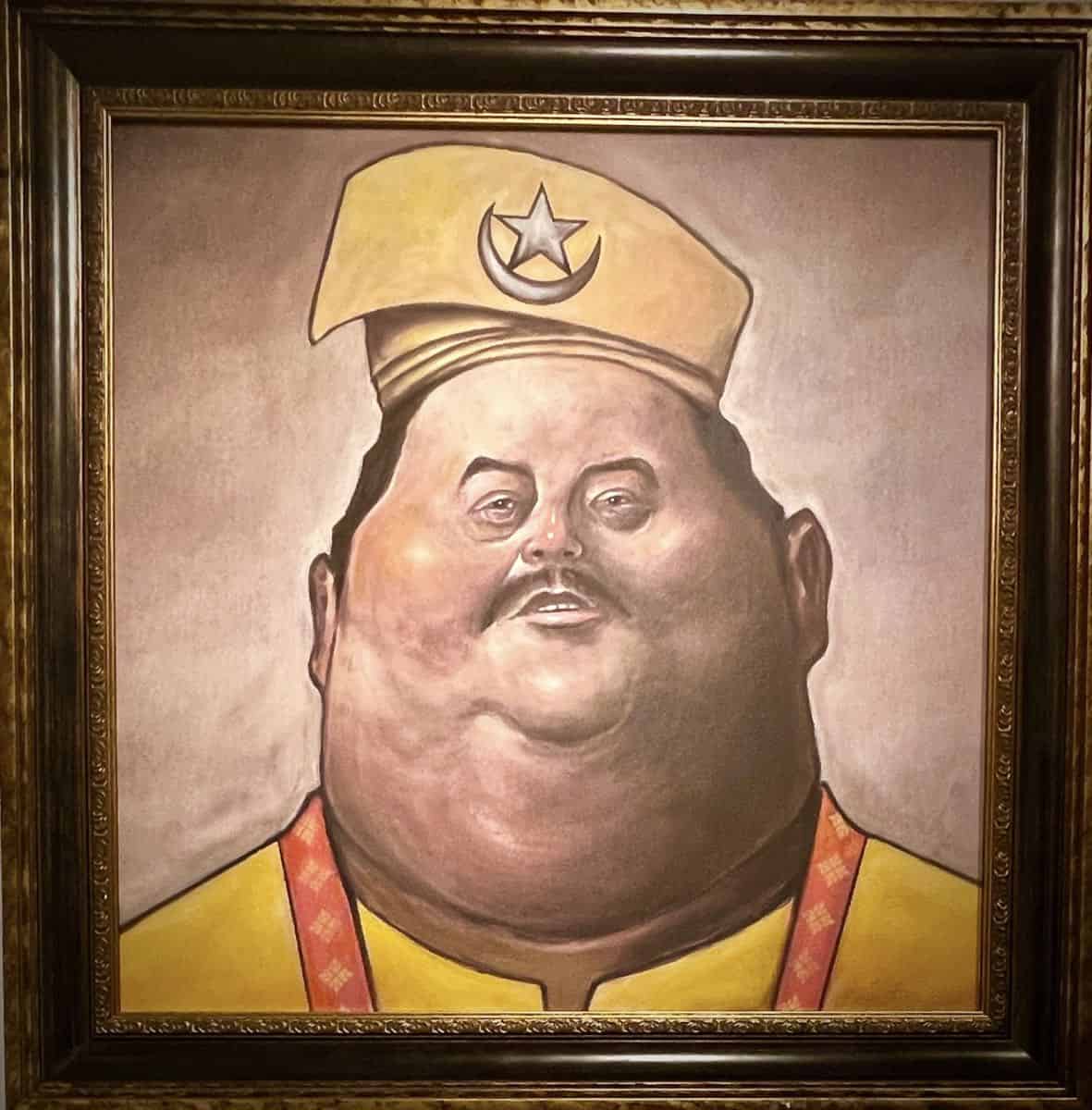
And, following from (or related to) that, why a board game about Singapore’s colonial history in particular?
Heh, that was partly due to the fact that we were given the word “Temenggong” as a word or theme for the exhibition, and looking up the history of Singapore led to Temenggong Abdul Rahman and his role in the early days of Singapore’s colonisation by the British.
There’s also been increasing scrutiny of the legacy of British rule in its Empire days in more recent years, both in the UK itself, and in Singapore, as seen during the Bicentennial celebrations in 2019.
Historians have pointed out that history is always an argument, always an interpretation of the past; I think the research was a way for the team involved to get a better grasp of the narratives at play for ourselves, and then to contribute to it in some small way through the game.
How did you achieve these aims, in terms of designing the game-play and procedural rhetoric of Singapore 1819? In the game, you have ceded considerable agency to players in terms of creating meaning – there are a number of different ways to achieve the ultimate goal, a plurality of outcomes and lots of ambiguities built into the game. Would you care to elaborate and explain your thinking?
Well that’s the essence of historically based board games – to create a believable setting but allow various plausible outcomes, rather than requiring a linear set of events. Otherwise there wouldn’t really be agency for players or meaningful choices?
So one mechanic introduced was “Personal Objectives”, which is a pretty common device in board games, giving players their own goals which can help them earn more points to win the game; these objectives then provide variability in what each player hopes to achieve, whether for example their goal is to accumulate private wealth, or to ensure that gambling is eradicated.
At this point we are all of course just imagining what all these pluralities could be – until the game is actually played or play tested it can only be said that the project offers suggestions of possibilities and a framework for thinking about agency.
The board game installation at Temenggong was fascinating to experience and explore and I love the layers you built into it. But I do think that the key to how a board game conveys meaning (and what makes it art) is its immersiveness, its interactivity and its procedural rhetoric – it needs to be played. What are your thoughts on this?
I think that’s been addressed to some extent in some of the earlier answers, but it remains a fair point.
I would again point to the videos like SU&SD’s review of War of Rings or Undaunted – games which I’ve never had a chance to play but for which the videos themselves have provided a sense of the potential of play and experience.
Maybe there are similarities to the worlds conjured by Jorge Luis Borges or Stanislaw Lem, or even in The Art of Charlie Chan Hock Chye – where reviews or accounts of made up writers and works can in themselves evoke possibilities that our imaginations work on to tell their own stories, and kind of “closure” that fills in the spaces opened up by the fictional accounts.
That said… given the interest in playing the game, we are in the process of seeing if we can turn 1819 Singapore into a real game, so if that bears fruition it will be interesting to see what it all might mean…!
Finally, and this is a question that I have a personal interest in – how likely is it that Singapore 1819 will be produced and made available commercially? Board game geeks everywhere really want to know!
It’s in the works – we have proper board game designer on board to help see how it might be done, what elements from the “fake” game can be retained in an actual game – whether something like being able to tear up the 1819 Treaty, which works as a historical point about it’s nature and the power dynamics of the region, can actually be a workable mechanic, since it gives one player the chance of just ending the game early if they are unhappy, perhaps to everyone else’s chagrin :p
____________________________________
Editor’s Note: Interested in knowing more about board games as works of art? Writer Yi Jian tells us about the Malaysian card game Politiko in his article, Games People Play.
